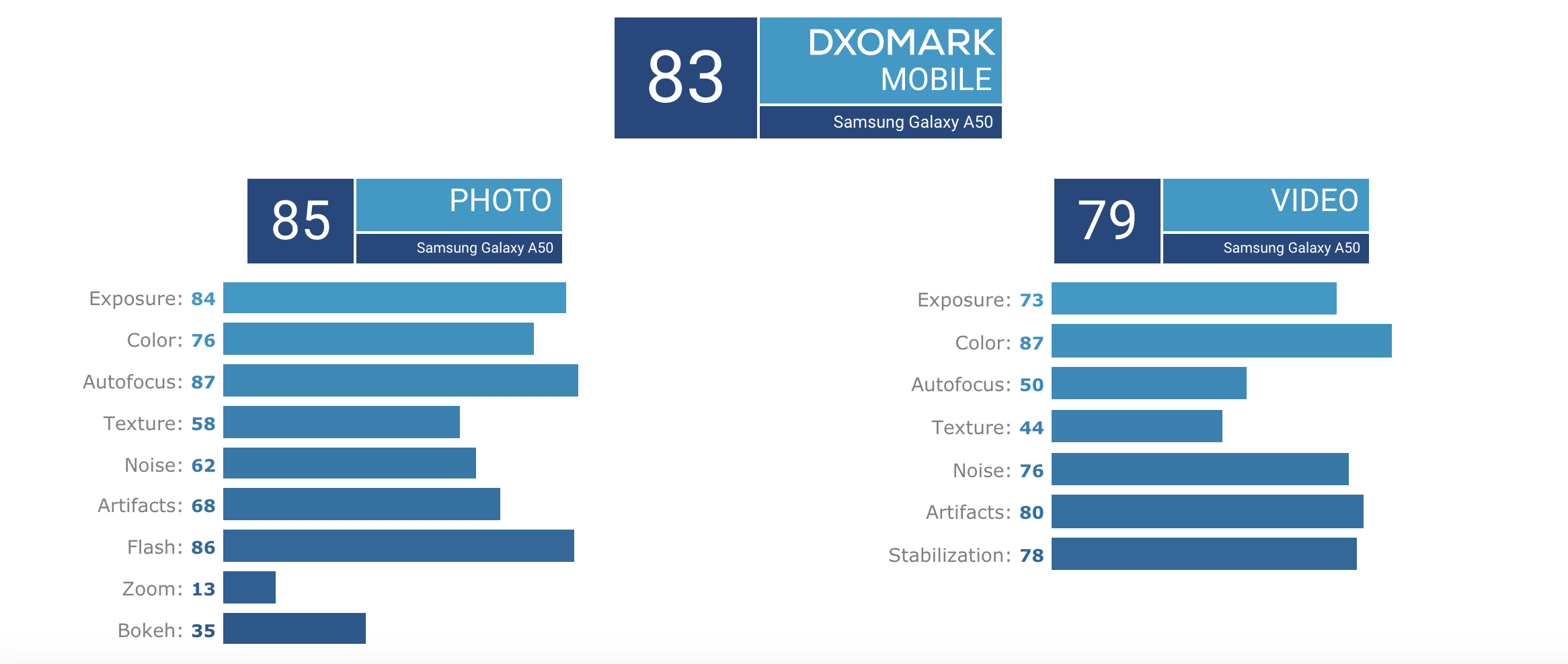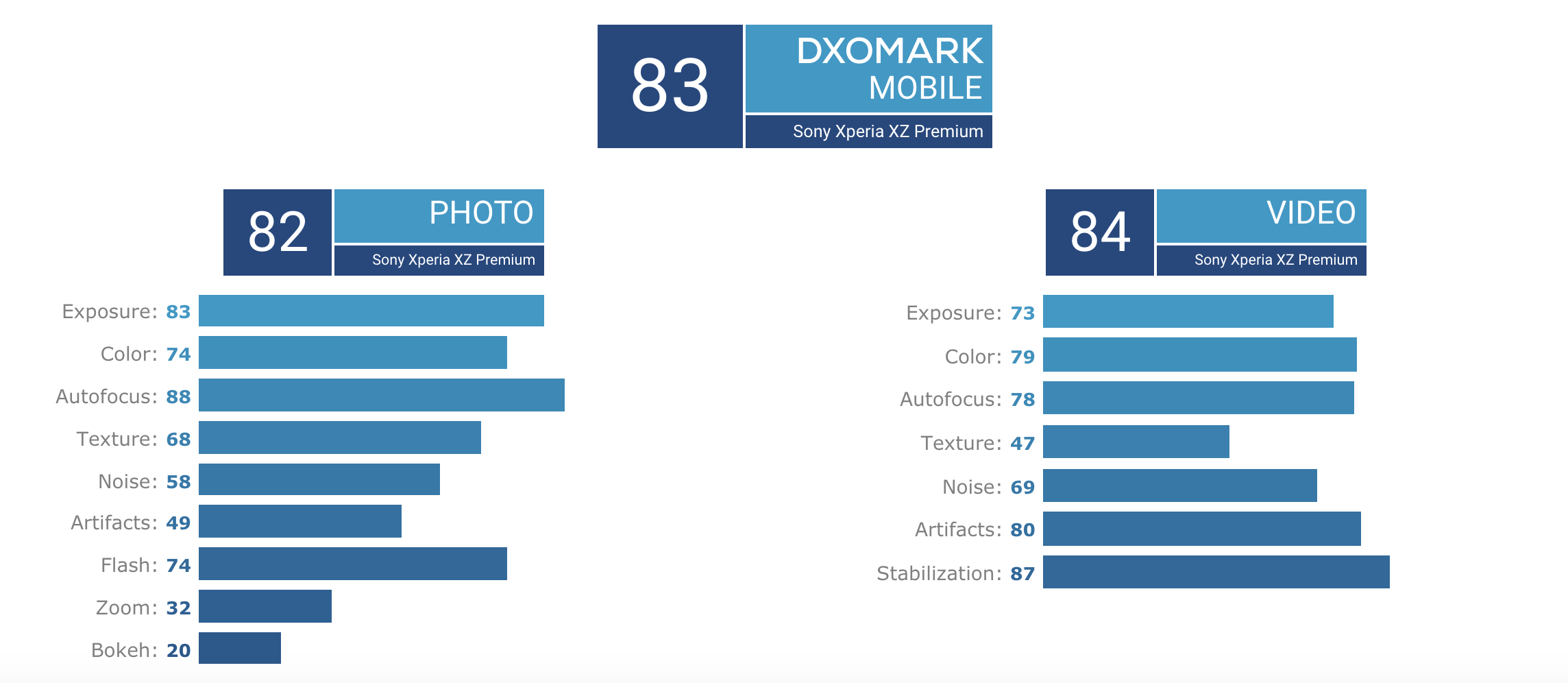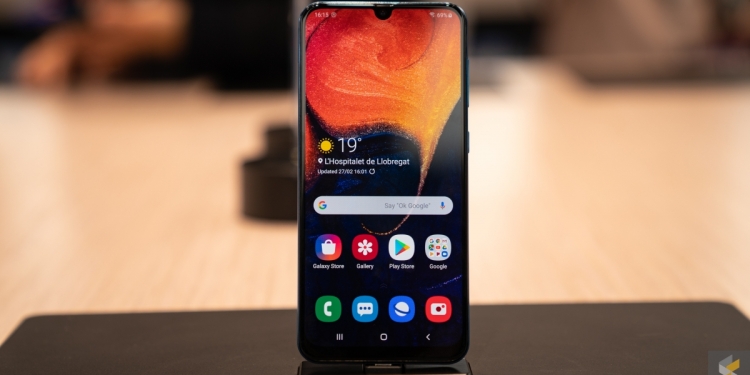Earlier this year, Samsung announced the release of two smartphones aimed at the midrange market, the A50 and A30. And its the former that has been revealed to have a camera setup that rivals Sony’s camera-centric Xperia XZ premium, as per DxOMark’s scoring system.
The A50 is powered by an Exynos 9610 SoC and only comes in 1 variant for Malaysia: 6GBs of RAM and 128GBs of storage. But Samsung’s A series smartphones aren’t really meant to be powerhouses, or performance chart-topping devices. Instead, they’re supposed to fill the niche that is the (premium) midrange—a space that has been dominated by Chinese smartphone makers.
Instead, Samsung has included a 4,000mAh battery along with a 6.4″ AMOLED display with the A50. This is topped off with a triple-camera setup at the rear: a 25MP f/1.7 aperture wide camera, an 8MP f/2.2 aperture ultra-wide camera, and a third 5MP depth sensor. As for its front-facing lens, you get a 25MP selfie shooter with an f/2.0 aperture lens.
DxOMark scores

So how does this translate to a real-world experience? The folks over at DxOMark recently posted a very decent overall score of 83 for the A50—not quite flagship level, but a respectable one for its price point. In fact, its score actually beats a few older flagships, and is just shy of the iPhone 7’s DxOMark score (85 overall).
The score is broken down into separate ratings for photos and videos, with the A50 scoring 85 for still images and 79 for videos. According to the breakdown, the A50 boasts of great colour reproduction, wide dynamic range, good exposure and white balance. However, there are some letdowns when it comes to fine level details, low-light focus speed, and accuracy; there were also autofocus inconsistencies and a lack of detail for video recording, although video stabilisation earned some points on the boards as well.

The Xperia XZ Premium was Sony’s flagship offering in 2017 and features a host of photography-focused elements, with a 19MP 1/2.3-inch image sensor that is based on Sony’s 3-layer stack technology for smartphones, allowing for fast readout speeds and a 960 fps slow motion video mode that can record 720p footage. But all that only amounts to an identical overall score of 83, with individual marks of 82 for photos and 84 for videos.
Yes, we know this isn’t exactly a side-by-side comparison, but perhaps this is more evidence of what we already know—midrange smartphones are catching up to flagships, and it looks like Samsung is trying to get a slice of the pie that is the midrange.
[ SOURCE ]








